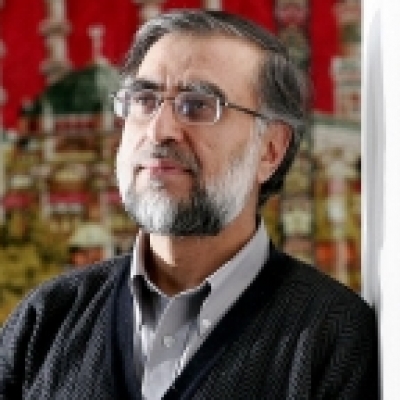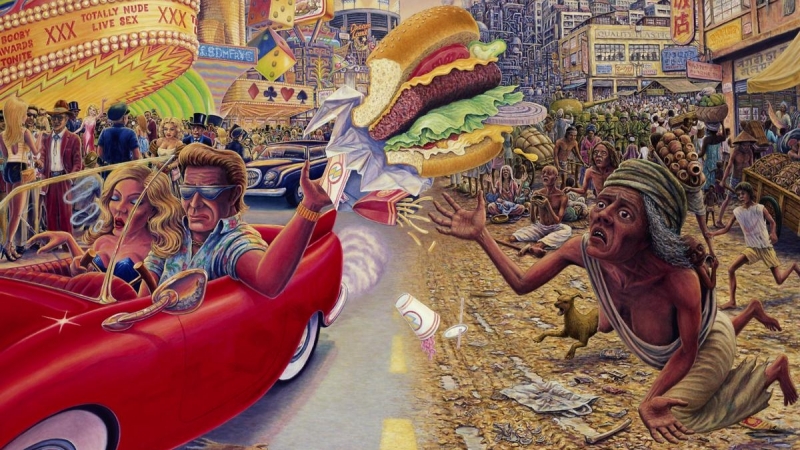 Zafar Bangash
Zafar Bangash
The Global Poverty update of the World Bank Report (April 2018) reveals some alarming figures. The number of people earning $1.90 or less/day climbed from 764 million in October 2017 to 783 million in April 2018, that is, 20 million more people fell into the poverty trap in six months. If we consider the earning threshold of $5.50/day, this number rises to a staggering 3.481 billion — more than half the world’s population. The poor reside mainly in South Asia (1.418 billion), East Asia/Pacific (853 million) and Sub-Saharan Africa (807 million), nearly half of the world’s population.
The 62 richest people in the world have as much wealth as the bottom 3.6 billion people. In its January 2018 report, Oxfam revealed that the nearly one trillion dollars of new wealth created last year went to just 20 people. Oxfam’s report of 2017 made even more startling revelations.
Titled “An Economy for the 1%,” the report showed that wealth of the poorest half of the world’s population had fallen by a trillion dollars since 2010, while the wealth of the richest 62 people — yes only 62 people — increased by more than half a trillion dollars ($542 billion) to $1.76 trillion, according to 2015 figures. The few rich men own as much wealth as the bottom half of the world’s population of 3.6 billion people.
This is the direct result of unfair and often illegal practices by the rich and powerful. The American billionaire, Warren Buffet, boasts that he pays less tax than his domestic servant. Similarly, US President Donald Trump says he is “smart” because he does not pay tax. Is he smart or crooked? The laws are deliberately structured with legal loopholes to benefit the rich.
There are problems within countries as well as among countries. Just as the rich exploit the poor in their own countries — there are an estimated 50 million poor in the US despite its GDP of $17 trillion — there are also gross inequalities between countries. Again these relate to unfair trade practices.
In his 2017 book, The Divide: A New History of Global Inequality, Jason Hickel, an anthropologist at the London School of Economics, says that in just one year, “rich countries take $2 trillion more from poor countries than they return in aid and investment. The countries that brag most about their foreign aid are enabling mass theft.”
The US-based Global Financial Integrity (GFI) and the Centre for Applied Research at the Norwegian School of Economics recently published some fascinating data and tallied up all of the financial resources that get transferred between rich countries and poor countries each year. They found that in 2012, the last year of recorded data, developing countries received a total of $1.3 trillion, including all aid, investment, and income from abroad. But that same year some $3.3 trillion flowed out of these countries. In other words, developing countries sent $2 trillion more to the rest of the world than they receive each year. If the figures are tabulated from 1980, then net outflows from the global south add up to a staggering $16.3 trillion, almost equal to the total GDP of the United States.
Thus, the narrative that developing countries receive “aid” from the West is completely false. There is massive outflow of resources from the developing world to Western countries. These include interest on debt and debt repayments and pilfering of money through false invoicing. Again quoting GFI figures, Hickel writes, “…by far the biggest chunk of outflows has to do with unrecorded — and usually illicit — capital flight. GFI calculates that developing countries have lost a total of $13.4 trillion through unrecorded capital flight since 1980.”
Corporations — both international and local — indulge in false invoicing. This facilitates transfer of money out of developing countries directly into tax havens and secrecy jurisdictions, a practice known as “trade misinvoicing.” While tax evasion is the primary motive, it is not the only one. The practice is also used to launder money or circumvent capital controls. In 2012, developing countries lost $700 billion through trade misinvoicing, an amount five times the total aid they received in that year.
This would be familiar to the people of Pakistan. Two thieving families — the Sharifs and Zardaris — have stolen hundreds of billions of dollars from Pakistan and stashed them in Western offshore tax havens. Globally, it is estimated that a total of $7.6 trillion of individuals’ wealth is stashed in such offshore accounts.
Zafar Bangash is Director of the Institute of Contemporary Islamic Thought (ICIT).


No comments:
Post a Comment